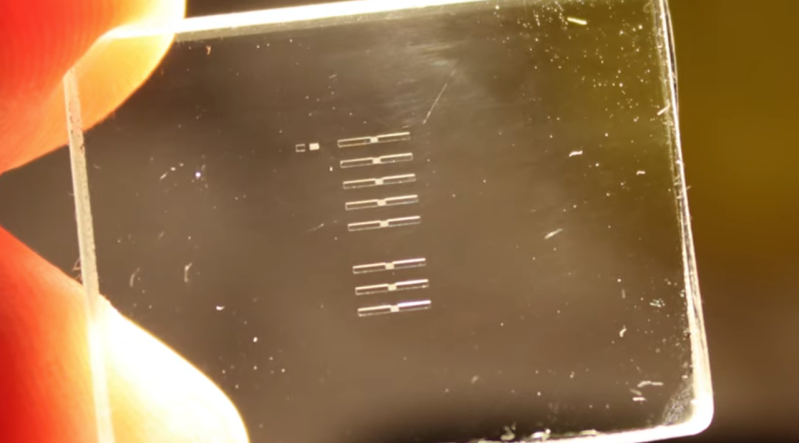While it’s in vogue right now to name fancy new technology after Tesla, the actual inventor had plenty of his own creations that would come to bear his namesake, including Tesla coils, Tesla oscillators, Tesla turbines and even the infamous Tesla tower. One of the lesser known inventions of his is the Tesla valve, a check valve that allows flow in one direction without any moving parts, and [Huygens Optics] shows us a method of etching tiny versions of these valves into glass.
The build starts out with a fairly lengthy warning, which is standard practice when working with hydroflouric acid. The acid is needed to actually perform the etching, but it’s much more complicated than a typical etch due to the small size of the Tesla valves. He starts by mixing a buffered oxide etch, a mix of the hydroflouric acid, ammonia, and hydrochloric acid, which gives a much more even etching than any single acid alone. Similar to etching PCBs, a protective mask is needed to ensure that the etch only occurs where it’s needed. For that there are several options, each with their own benefits and downsides, but in the end [Huygens Optics] ends up with one of the smallest Tesla valves ever produced.
In fact, the valves are so small that they can only be seen with the aid of a microscope. While viewing them under the microscope he was able to test with a small drop of water to confirm that they do work as intended. And, while the valves that he is creating in this build are designed to work on liquids, [Huygens Optics] notes that the reason for making them this small was to make tiny optical components which they are known for.
Thanks to [coneloco] for the tip!
















I could see this as part of a lab-on-a-chip.
Unnecessarily high cost and complexity for lab-on-a-chip. There are far faster and cheaper ways.
Dr. Vleggaar knocks it out of the park with another exceptionally information-packed presentation.
And HF is no joke. A few years ago a worker in a local chemical plant here was in the wrong place, wrong time when a pipe burst, and got a lungful of it. Horrible, horrible sequelae.
It’s a good thing is to have calcium gluconate available when working with HF acid.
This is a really cool intro to chemical machining.
alas, every time I see an article about glass machining, I eagerly look to see if this time they spelled hydrofluoric right, and, inevitably, no, they didn’t.
Hydroflouric acid – powdered wheat and water right?
Haha! I think I made several projects with paper soaked in ‘hydroflouric acid’ in primary school.
ok, bad letter swap for that acid (I’m a chemist, also noticed), but I’m also in IT and a french native guy. If I have to count how many times I found silicon translated as “silicone” and not silicium… And obviously, you see more blogs about silicon than about hydrofluoric acid :-(